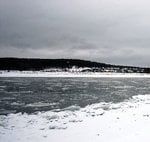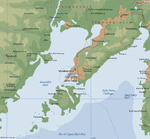proton45
Senior Airman
I agree with Imalko, it wasnt the terms of refernce for this thread.....however, if we are going to assume that the Japanese are suddenly going to field a regular army bigger than that fielded by the Germans, should we not also consider similar expansions for the the allies, chines or Soviets. The sky is the limit once you start to depart from the known situation. Why couldnt the Chinese be equipped with surplus Russian equipment.....if we assume that then all of a sudden the allies have another 300 divisions to play with....why not assume that lend lease is diverted to the Pacific, in lieu of the US involvement, and field approximately another 30 divs and about 1500 aircraft. The possibilities are endless, and in the end quite silly, from either bias or perspective.
The only way this scenario can be objectively assessed is on the basis of the forces available. Japan did not have the plane or the pilots to fild 500 zeroes.....they didnt even have enough to field 300 and thats in December, not June.
The whole excercise becomes a bit ridiculous if we start introducing fanciful what ifs into the equation. Or if we do, it then becomes necessary to postulate logical quid pro quos for both sides
The Chines suffered from poor communication. Many of the troops fighting for the Chinese where led by cooperating "warlords"...if one where too assume that that the "re-enforced"-"re-equipped" Chinese would have been a (more) formidable adversary, one would have to believe that cohesion (coordination) between "generals" was improved too...
Their is reason to believe that the Japanese would have used the same "surprise" tactics they where well know for...if they where able to keep the pressure on the Russian airbases (bombing sorties) they might have been able to keep the Russians on the defensive...in the air anyways.




